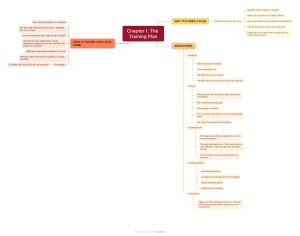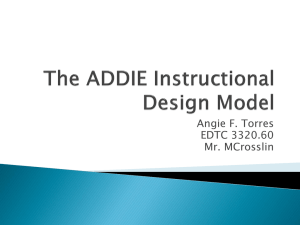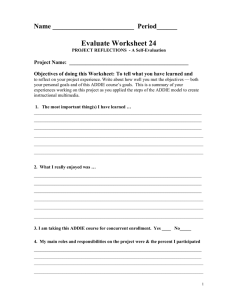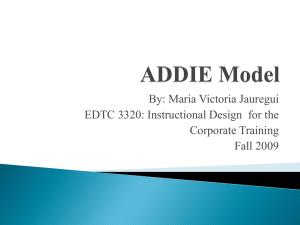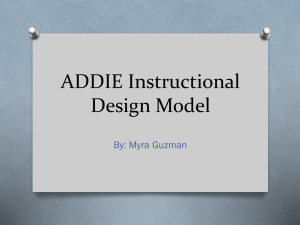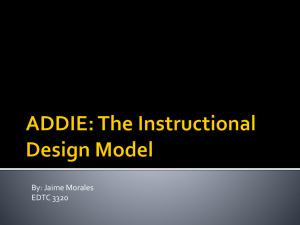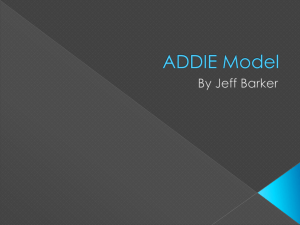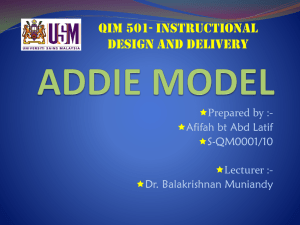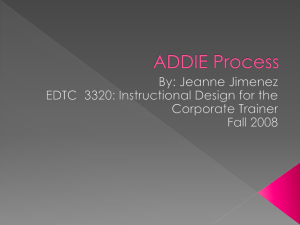The ADDIE Model Presentation
advertisement
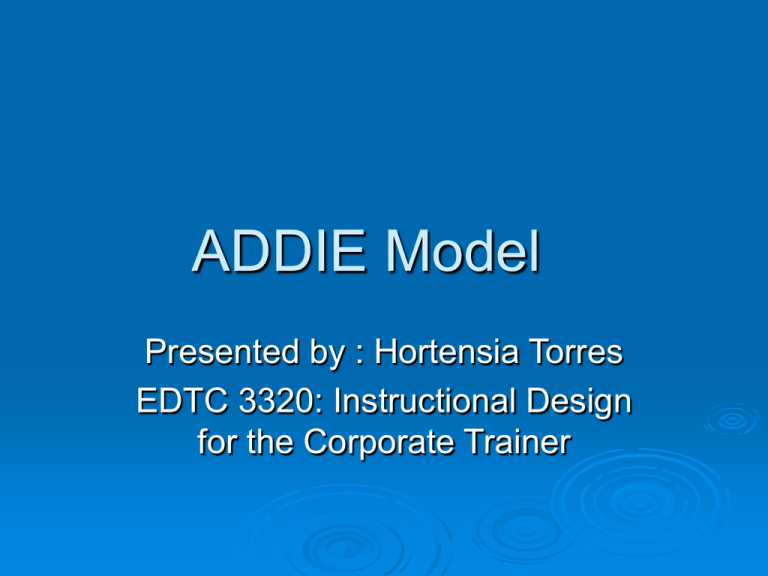
ADDIE Model Presented by : Hortensia Torres EDTC 3320: Instructional Design for the Corporate Trainer Introduction The ADDIE instructional design model is the most common instrument use by the instructional designers. It is a model that teach step-by step the whole process of any training program, it is use in the framework to create new ideas. The 5 Components The ADDIE design model has 5 components: Analysis Design Development Implementation Evaluation Analysis During analysis , the designer identifies the learning problems. Consider the learning environments. The delivery options The timeline for the project Design Design phase deals with learning objectives Apply visual design The project reviewed and revised according to the feedback received Determine program duration and sequence Development Developed training and on the job aids Develop coaching/mentoring guides and resources Develop participants assessments Conduct pilot program to test that program meets client requirements Implementation Implement Produce Cover trainings, transfer strategies program, materials and aids the course curriculum Collect participants feedback Evaluation Collect training program evaluation Collect project evaluation data Review training program Review project performance Report program and project performance results THE ADDIE MODEL Analize Design Evaluation Develop Implement Conclusion The ADDIE model helps to instructional designers with a step-by-step guideline for building effective training and performance support tools . This model consists of five phases: Analysis Design, Development, Implementation, and Evaluation REFERENCES ADDIE Model-Wikipedia, the free encyclopedia. Retrieved September 18th, 2009 from: http://en.wikipedia.org/wiki/ADDIE_Model ADDIE Instructional Design Model presented by Intulogy. Retrieved September 18, 2009 from: http://www.intulogy.com/addie/ ADDIE Model at Learning Theories.Retrieved September 18, 2009 from: http://www.learning-theories.com/addie-model.html
